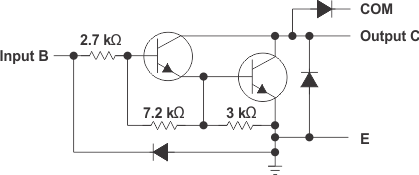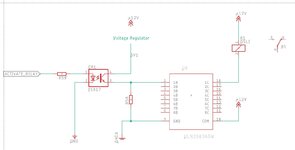venkates2218
Full Member level 6
Hai,
There are two power supplies +5VDC and +12VDC.
+5VDC is given only to MCU and other ICs.Relays are operated by seperate +12VDC.Both power supply having separate GND.
I'm using ULN2803 to operate relays.
My doubt is shall we connect the ULN2803 directly to MCU through resistor to driver relay or shall we use an optocoupler between MCU and ULN2803 to drive relays?
There are two power supplies +5VDC and +12VDC.
+5VDC is given only to MCU and other ICs.Relays are operated by seperate +12VDC.Both power supply having separate GND.
I'm using ULN2803 to operate relays.
My doubt is shall we connect the ULN2803 directly to MCU through resistor to driver relay or shall we use an optocoupler between MCU and ULN2803 to drive relays?


